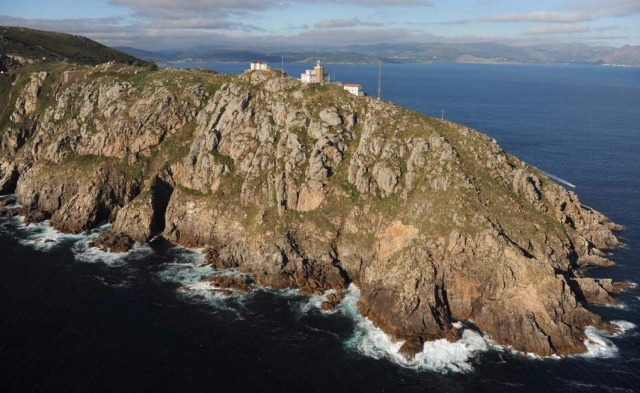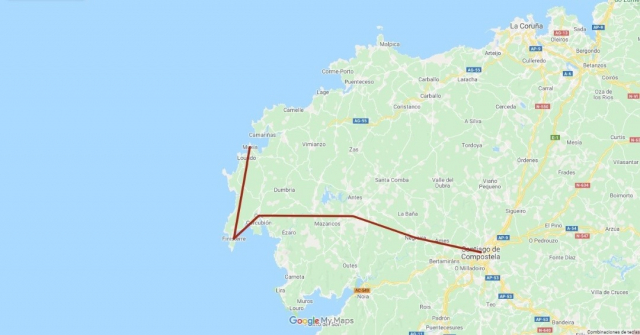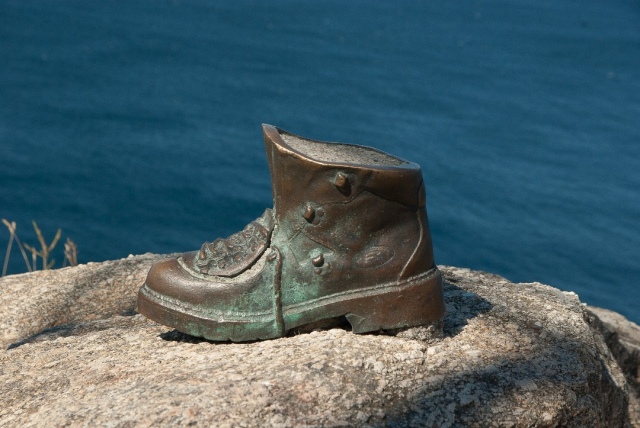Cape Finisterre: What to know before visiting it
For years, possibly centuries, it was believed that Finisterre was the place that had the privilege of being considered the End of the World. What continues to make such a unique enclave so especially?
Cape Finisterre is popularly known for being the "End of the World", but when we talk about the Camino de Santiago, we find "the other goal". Fisterra is the second most visited town in Galicia after Compostela, and no wonder. Located in the far west of Europe, it is a region with a lot of symbolism surrounded by thousands of legends that intertwine religious and maritime themes.
How to get to Cape Finisterre if you do the Camino de Santiago?
As we have mentioned above, Cape Finisterre and Muxía are the second goal of the Camino de Santiago. Many pilgrims decide to end their adventure there because of the Jacobean links, where thousands of years ago the "End of the World" was located. Nowadays it embraces one of the most significant routes among the rituals of the pilgrimage, so it is not difficult to find the way to this historic place.
With a distance of 90 kilometres between Santiago de Compostela and Finisterre, this route has a completely optional extraordinary stage. There are pilgrims who prefer to extend the experience a little longer by taking a route that takes us to and ends in Muxía, a small coastal town located about 28 kilometres from Fisterra.
- Stage 1: Santiago - Negreira
- Stage 2: Negreira - Santa Mariña
- Stage 3: Santa Mariña - Cee
- Stage 4: Cee - Finisterre
- Stage 5: Finisterre - Muxía
Why was Cape Finisterre considered the end of the world?
"Where the real ends and the mystery begins". Cape Finisterre still retains, to this day, the epithet 'The End of the World'. It is a concept that has been passed down from generation to generation and from century to century, becoming one of the most emblematic places in Galicia. But why is it popularly known by this term? What is so special about the place and why has it always been the focus of stories in which sailboats and large ships have been the victims?
If pilgrims have the opportunity to travel to Cape Finisterre, it will not take them long to realise that whether they look to their left, right or simply in front of them, all they will see is the sea. This series of scenic features, together with the indescribable sunset over the immensity of the ocean, led to the belief in the past (more specifically during Roman times) that this was the last corner of the world; a thought that was preserved intact for thousands of years.
The name Cape Finisterre, for example, derives from the Roman "Finis Terrae", as it is considered to be the "end of the Earth", as the translation goes. Nothing could be further from the truth, because although today we know for a fact that the world does not end at Cape Fisterra, its location is believed to be the westernmost point in Europe.
What to visit at Cape Finisterre?
Is Cape Finisterre an obligatory meeting point for pilgrims? If you were beginning to rethink the question, the answer is more than yes. Many of the brave pilgrims who venture on the Camino de Santiago, decide to end their journey precisely at Cape Finisterre. The reason? In ancient times, a ritual of purification and rebirth was performed by burning the boots and throwing the ashes into the sea.
The enclave holds so much symbolism, tradition and history, that those pilgrims who want to go a step further can visit other equally relevant places. The points of interest described below are places where you will not miss some very impressive panoramic views.
- Langosteira Beach. As tradition has it, pilgrims can say that they have officially arrived at the "End of the World" when they leave their footprints for the first time on the sands of Langosteira, a beach of more than three kilometres in length. Bathing in this emblematic place is part of the ritual of this second goal of the Pilgrim's Way to Santiago.
- Ézaro waterfall. The river Jallas merges with the Atlantic at the same point: the Ézaro waterfall. In this iconic place we discover what is probably one of the most beautiful spots in the whole town, as it offers normal panoramic views that will be impossible to erase from our memory.
- Castle of San Carlos. Near the beach of O Corbeiro, another of the main attractions of the town is the Castle of San Carlos; a fortification dating from the mid-17th century that was built as part of a defensive plan to protect the estuary.
- Finisterre Lighthouse. This is a must-see, as it is one of the most emblematic and oldest lighthouses in Europe. It was erected in 1853, and although it is no longer in operation, it has served to protect one of the most dangerous coasts (the famous Costa da Morte), where countless ships have sailed throughout history.
Related
Routes
Blog
 ¿Vas a hacer el camino de Santiago? Cuida tus pies antes y después
¿Vas a hacer el camino de Santiago? Cuida tus pies antes y después
 5 razones por las que contratar un seguro de viajes
5 razones por las que contratar un seguro de viajes
 Formas de hacer un logotipo
Formas de hacer un logotipo
 La importancia del registro de llamadas durante tu viaje por el Camino de Santiago
La importancia del registro de llamadas durante tu viaje por el Camino de Santiago
Information
Points of interest
Cities & Towns | Hostels | Lodgings | Restaurants | Saddlery | Doctors | Points of interest | Bikes workshop
Contact us | Privacy policy | Cookies policy | | Terms of use | Authorship | Web Map | Consentimiento
© Copyright LA VOZ DE GALICIA S.A. Polígono de Sabón, Arteixo, A CORUÑA (ESPAÑA) Inscrita en el Registro Mercantil de A Coruña en el Tomo 2438 del Archivo, Sección General, a los folios 91 y siguientes, hoja C-2141. CIF: A-15000649


